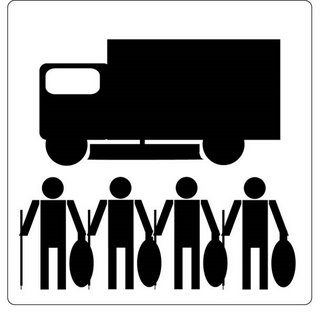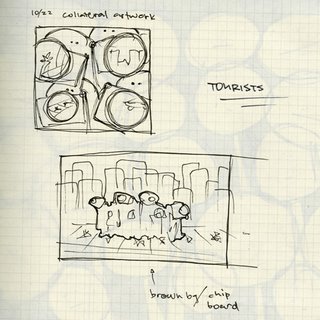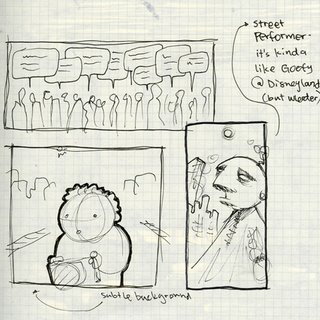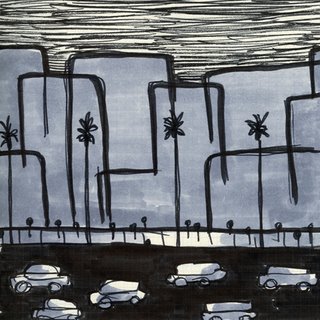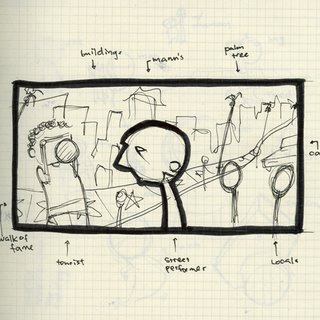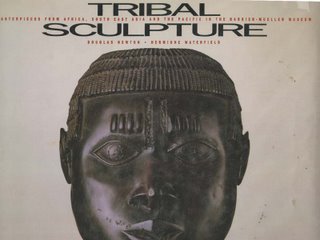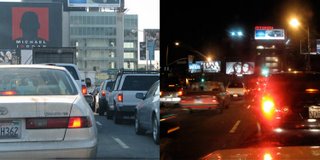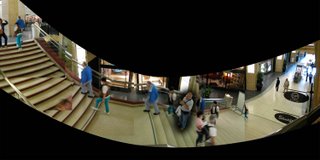When operating on Hollywood Blvd and Highland, by means of retail and entertainment, your goal is to sell a mystique of what Hollywood is known for. The human activity and events that take specifically on this intersection are within the realms of creating glamour and prestige. Walking on the names of the elite of the entertainment industry, re-visiting the created monolithic experience of the Kodak, Mann and Pantages Theaters are all part of an encapsulated moment of Hollywood nostalgia. Yet, the day to day operation of how this intersection functions is a multi-layered fabric of street vendors, street performers, privatized security, high end shops, souvenir stores galore and tourists from around the world. The events that take place between these socio-economic groups reveal the true aesthetics of this intersection: a terminal point for Los Angeles commerce- not the real Hollywood icon.
The Toy Icon project is focused on these urban conditions through an investigative process of cataloging, sketching and driving questions of how the intersection operates. The project catalogued a series of individuals: street performer, vendors, tourists, artists and patrolmen through videos, sketches and photography to cumulate a narration of day to day of Hollywood and Highland. (please refer to Immersion in previous post ”Pulling off the extremes.”) . Through these exercises the project identified an urban condition: face value. This term is described as a condition in which a place is utilized to sell an idea or reality of that specific place- but actually does not occur.
Hollywood and Highland is assumed to feature possible celebrities and entertainers that inhabit and convene this part of Hollywood daily. One way this idea is celebrated though Hollywood’s Walk of Fame. Many tourist go along the Walk of Fame to find their idols assuming that it is a part of those mentioned. However, the twisted reality is that the Walk of Fame is somewhat disorganized as it show cases the entertainment industry’s elite in an unrecognizable pattern. Hollywood Icons such as Bob Hope and George Burns are celebrated within the same realms of Kevin Spacey and Nicolas Cage.
At the same tourists flock along this intersection, street performers, artists and vendors circulate around and on top of the stars. When the Hollywood and Highland Complex first open up in 2002, it was presented by the Hollywood Redevelopment Commission as boost to Hollywood’s economy. Home to Kodak Theatre, adjacent to the Mann Chinese theatre and Renaissance Hotel, the complex featured two shopping areas: an outdoor courtyard and a mall space with a staircase leading to the Kodak Theatre. However, just three months after its opening, retail operators coined the interior space as the “Corridor of Death.”- due to a very slow sales. Many tourists and visitors complained of the parking rates and accessibility. Yet, a decent amount of sales occur at the sidewalk level amongst the “stars.” Vendors, street performers, souvenir shop owners and street artists operate in conglomerate fashion: interaction with tourists, providing items of sentimental value, and selling maps of the Hollywood nostalgia (Star Maps).
These present day events are summation of the face value condition. This urban space operates within a socio-economic sphere that create certain sub-conditions that are part of this environment. These sub-conditions are results of the interstitial relationship of Hollywood’s present economy and municipalities, small and corporate businesses on Hollywood and Highland, and the working class demographic of Los Angeles’ population.
Security Recognizance- Developers and owners of Hollywood and Highland were under heavy scrutiny of how safe would the new complex be for visitors and tourists. In 2001, LAPD Hollywood District reported violent crime (aggravated assaults, robberies, rapes and homicides) was up to 175 incidents through Dec. 11 2000 vs. 143 incidents for all of 2000. As a result since it s opening, huge investments into privatized security work with LAPD officials went into the project. The are about usually 7-10 security officers patrolling Hollywood & Highland daily.
Guerilla Vendoring- Whether by permit or no permit, vendors selling everything from hot dogs to your occasional knock off Gucci purse inhabit Hollywood & Highland’s street level. Pedestrian traffic from the near-by Red Line station and other metro routes make the northwest part of the intersection a prime location.
Clean Mobility- The Hollywood Redevelopment Committee and Chamber of Commerce have inserted a specialized street cleaning force for this intersection. Everything from caravans street sweepers and garbage trucks to individual trash collectors, all work as a specialized unit to tidy up Hollywood & Highland and its stars.
Inverse Terminal- Developers of Hollywood & Highland executed a huge campaign to make it a prime destination for Angelino nightlife and tourism. However, the intersection has generated more traffic and tourism but the effect is somewhat the opposite. Due to metro routes, a transfer stop for eight bus routes and being the third destination on the Red Line, and Star Map tours using the location as a meeting point for pickups, most visitors and tourists use Hollywood & Highland as a transition point in their travels- not as a final destination. (Within three months of its 2001 opening, retail stores reported huge slumps is mercantile sales.)
Rehearsed Encounters- Street performers have a very unique role at this location. Most are veterans and generate interactions with pedestrian traffic along Hollywood. Many offer photo-ops and small performance for small fees. In all, these experiences are laid out and planned, depending on the character portrayed by the performers. Thus, this network of performers make Hollywood a living stage that is played daily.
Event Takeover- For events such as the Academy Awards or AFI Achievement Awards, Hollywood and Highland is set-up for street traffic takeovers. These high profile events can easily affect surrounding major streets: Sunset, Vine, Melrose and La Cienga, as Hollywood and Highland becomes block off with a steel barracade accompanied by fanatics, onlookers, and one huge red, velvet carpet. Day to day street vendors and street performers often do not benefit from such events due to the barricades. The intersection at this time can have over 22,000 occupants.
These sub conditions are still being refined but will be accompanied in the next post with drawings.
(more on these conditions in the next post Diagnosis: Face Value and Commerce Pt.2 )-mike-
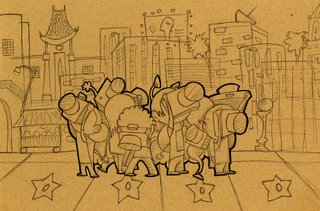 "tourist crowd" by vince...
"tourist crowd" by vince...

...with inverted colors.






